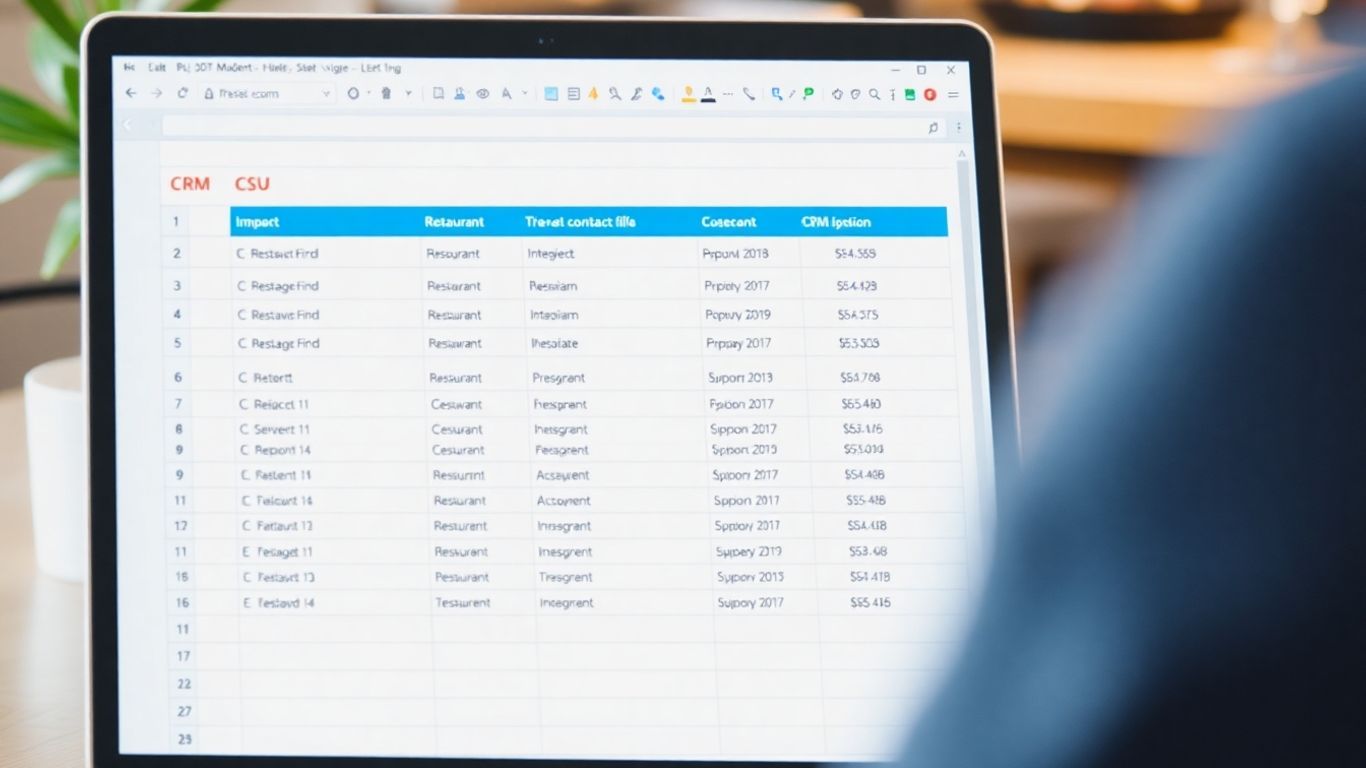Top Benefits of Targeted Architect Email Lists for Marketing and Partnerships
Blog Author - Published Date
Looking to connect with architectural firms across the country? An Architect Email List can be your roadmap. It's a way to reach out to the people designing the buildings we see every day. Think of it as a directory that helps you find and talk to these professionals, whether you're looking for clients, partners, or just want to share your services. Getting the right contacts can make a big difference in growing your business.
Key Takeaways
- An Architect Email List helps you connect with architectural firms nationwide.
- It provides key contact details for targeted outreach to design professionals.
- Using the list effectively can help you find new clients and business opportunities.
- Keeping your Architect Email List accurate and updated is important for successful campaigns.
- Segmenting your list allows for more focused and productive marketing efforts.
Accessing Your Architect Email List
Getting your hands on a solid architects email list is the first step to making real connections in the design world. Think of it as your direct line to firms across the country. We're talking about a curated architects contact list that cuts through the noise, giving you the information you need to reach out effectively. This isn't just a random collection of addresses; it's a targeted resource designed to help you connect with professionals who matter to your business.
Understanding the Architect Email List
So, what exactly goes into a good architects email list? It's more than just names and email addresses. We're talking about a detailed SIC 8712 architects database that includes firm size, location, and sometimes even specific project types they focus on. This kind of detail helps you understand who you're contacting before you even send that first email. It’s about knowing your audience, plain and simple. Having this information means you can tailor your message, making it more likely to get a positive response. It’s a smart way to start any outreach.
Key Data Points for Outreach
When you're looking at an architects contact list, certain pieces of information really stand out. You'll want to see:
- Firm Name: Obvious, but essential.
- Contact Person: Ideally, a specific person like a principal architect or head of business development.
- Email Address: The primary way to get in touch.
- Location: Knowing the city and state is key for targeted campaigns.
- Specialization (if available): Do they focus on residential, commercial, healthcare, or sustainable design?
This data helps you move beyond generic blasts and start building actual relationships. It’s the difference between shouting into the void and having a meaningful conversation.
Utilizing the Architect Email List Effectively
Once you have your architects email list, the real work begins. Don't just send out a mass email. Instead, think about how you can use the data to your advantage. A state-by-state architects list, for example, is perfect if you're looking to expand into new regions or focus on specific local markets. Segmenting your list based on firm size or specialization allows you to send highly relevant messages.
Remember, the goal is to provide value. Whether you're offering a new service, a helpful resource, or looking for a partnership, make sure your outreach is tailored to the recipient. Generic emails often get ignored, but a personalized approach can open doors.
By segmenting your contacts and personalizing your outreach, you’re much more likely to get a positive reception. It shows you've done your homework and respect their time and specialization.
Building Connections with Architectural Firms

Connecting with architectural firms across the USA is about more than just sending out emails; it's about building relationships. Our USA architecture firms list gives you the tools to find the right people to talk to, whether you're looking for a specific type of project or just want to expand your network.
Targeting Firms by Location
Finding firms in specific states or cities can make your outreach much more effective. Instead of a broad approach, you can focus your efforts where it matters most to your business. This means you can tailor your message to local needs or regulations, which often gets a better response.
- Identify firms in key metropolitan areas.
- Locate practices in regions with specific building trends.
- Pinpoint firms near your own operations for potential local partnerships.
Identifying Niche Specializations
Architectural firms often specialize in certain types of projects. Some focus on residential homes, others on large commercial buildings, or perhaps sustainable design. Knowing these specializations helps you connect with firms that are a good fit for what you offer.
| Specialization Category | Examples |
|---|---|
| Residential | Custom homes, multi-family housing |
| Commercial | Office buildings, retail spaces, hospitality |
| Institutional | Schools, hospitals, government buildings |
| Sustainable Design | LEED certified projects, green building |
| Historic Preservation | Renovation and restoration projects |
Understanding a firm's focus allows you to present your services or products in a way that directly addresses their needs and past work. It shows you've done your homework.
Strategies for Engaging Architects
Once you know who you want to reach and what they specialize in, you need a plan to connect. A simple, direct approach often works best. Start by introducing yourself and explaining why you're reaching out specifically to them. Mentioning a recent project of theirs that you admired can be a good icebreaker.
- Personalize your initial contact: Reference their work or a specific project. This shows genuine interest.
- Clearly state your value proposition: Explain what you do and how it can benefit their firm.
- Suggest a brief follow-up: Propose a short call or meeting to discuss potential collaboration.
Leveraging the Architect Email List for Growth

So, you've got this list of architects, which is pretty neat. But what do you actually do with it? It’s not just about having names; it's about making those connections work for your business. Think of it as a tool, not just a directory. You can really get things moving if you use it right.
Marketing to Design Professionals
This is where the list really shines. Instead of just blasting out generic messages, you can get specific. If you know a firm specializes in, say, sustainable design, and you have a new product that fits that niche, your message can be tailored. It makes your outreach feel less like spam and more like a helpful suggestion. We've put together some email templates that can help you get started with this kind of targeted communication. It saves time and usually gets a better response.
Partnership Opportunities with Architects
Beyond direct marketing, think about collaborations. Are there firms that complement your services? Maybe you do structural engineering and they focus on interior design. Connecting with them through the email list could lead to joint projects or referrals. It’s about building a network where everyone benefits. You might find that a simple introduction email can open doors to some interesting collaborations.
Sourcing New Business Leads
This is probably the most obvious use, but it's worth repeating. Every firm on that list is a potential client or partner. By segmenting your list – maybe by location, size, or specialty – you can run more focused campaigns. For example, if you're looking for work on educational buildings, you can identify firms that have a strong portfolio in that area and reach out directly. It’s a much more efficient way to find new opportunities than just waiting for them to come to you. The key is to be strategic about who you contact and why.
Using an architect email list effectively means moving beyond simple contact information. It's about understanding the landscape of architectural practices and identifying where your services or products can genuinely add value. This targeted approach increases the likelihood of meaningful engagement and successful business outcomes.
The Value of a Comprehensive Architect Email List
Having a solid list of architect emails is a game-changer for anyone looking to connect with firms across the country. It’s not just about having names and addresses; it’s about having the right connections at your fingertips. This kind of list opens doors that might otherwise stay shut, making it easier to get your message heard by the people who matter in the architectural world.
Connecting with Firms Nationwide
Imagine being able to reach out to architectural firms in every single state, from the bustling cities on the coasts to the quieter towns inland. A nationwide email list makes this possible. You can tailor your outreach based on regional needs or opportunities, whether you're looking to partner on a project in the Southwest or introduce a new product to firms in the Northeast. It really levels the playing field, allowing smaller businesses or specialized suppliers to connect with a much broader market without the usual logistical headaches.
Enhancing Your Professional Network
Beyond just sales or marketing, a good email list helps build your professional network. When you can easily identify and contact architects working on specific types of projects or in particular geographic areas, you start to build relationships. These connections can lead to collaborations, shared insights, and even mentorship opportunities. It’s about more than just transactions; it’s about becoming part of the larger architectural community.
Driving Business Development
Ultimately, the goal is to grow your business, and a well-maintained architect email list is a powerful tool for that. It allows for targeted marketing campaigns, direct outreach for new business leads, and even identifying potential partners for joint ventures. Think about it: instead of casting a wide, unfocused net, you can send specific messages to architects who are most likely to be interested in what you have to offer. This efficiency means less wasted effort and a better return on your outreach activities. It’s a direct line to potential clients and collaborators, helping you find new projects and expand your client base more effectively.
Optimizing Your Architect Email List Strategy
So, you've got this list of architects, which is great. But just having the names isn't really going to cut it, is it? You need to make sure that list is actually useful. Think of it like having a toolbox; you wouldn't just have hammers if you needed to screw something in. You need the right tools for the job.
Data Accuracy and Updates
First things first, let's talk about keeping your list clean. Emails change, people move firms, and sometimes, things just get outdated. It's a pain, I know, but it's super important. Sending emails to addresses that don't work anymore is just a waste of time and can actually hurt your sender reputation. You want to make sure the information you have is current. This means regularly checking for bounced emails and removing them. It’s also a good idea to periodically re-verify contact details, maybe through a quick survey or by cross-referencing with professional directories. Keeping your data tidy means your outreach efforts are more likely to hit their mark. A good starting point for understanding how to build and maintain such lists can be found in guides on marketing strategies for architects.
Segmentation for Targeted Campaigns
Now, not all architects are the same, right? Some focus on residential, others on commercial, and some might be all about sustainable design. Sending the same generic message to everyone is like shouting into the void. You need to segment your list. Break it down by location, by the type of projects they usually do, or even by the size of their firm. This way, you can tailor your message to what's most relevant to them. For example, if you offer services for large commercial projects, you'll want to target firms that specialize in that area. It makes your emails much more effective because they speak directly to the recipient's interests.
Here’s a quick look at how you might segment:
- By Specialization: Residential, Commercial, Healthcare, Education, Industrial, Sustainable Design.
- By Firm Size: Solo Practitioners, Small Firms (2-10 architects), Medium Firms (11-50 architects), Large Firms (50+ architects).
- By Geographic Focus: Local, Regional, National, International.
Measuring Campaign Success
Finally, how do you know if any of this is actually working? You've got to track your results. What's the open rate on your emails? How many people are clicking through to your website? Are you getting replies? Are these replies turning into actual leads or partnerships? Setting up some basic tracking is key. You can use analytics tools that come with most email marketing platforms. Look at metrics like click-through rates and conversion rates. This data tells you what’s working and what’s not, so you can adjust your strategy. Maybe one type of subject line gets more opens, or a certain call to action gets more clicks. Paying attention to these details helps you get better results over time. It’s all about learning and improving your approach.
Expanding Your Reach with an Architect Email List
So, you've got this architect email list, which is pretty neat. But how do you actually use it to get your name out there, beyond just your immediate neighborhood? It’s all about thinking bigger, you know?
Connecting with Firms Across All States
Having a list that covers all 50 states is a game-changer. It means you’re not just limited to local opportunities. You can reach out to firms in places you might not have even considered before. Think about it – maybe there’s a firm in Seattle that’s doing exactly the kind of work you admire, or a practice in Miami that could really use your services. This nationwide reach opens up a whole new world of potential clients and collaborators. It’s like having a map to every corner of the country where architectural innovation is happening. You can start by looking at firms in states where you see a lot of growth or specific types of projects that align with your business. It’s a simple way to broaden your horizons and find new avenues for business. You can find great resources for this kind of outreach at architectural firms nationwide.
Identifying Emerging Architectural Practices
It’s not just about the big, established names. The industry is always changing, and new firms pop up all the time. These newer practices are often eager to make a name for themselves and might be more open to trying new services or partnerships. Keeping an eye on these emerging players is smart. You can often spot them by looking at recent project announcements, awards, or even just by seeing who’s active on professional networking sites.
- Look for firms that have recently won awards.
- Check industry publications for new project announcements.
- Monitor social media for firms that are actively sharing their work.
Networking with Industry Leaders
Beyond just finding clients, an architect email list is a fantastic tool for building your professional network. Think about the established leaders in the field. Connecting with them, even just to share insights or discuss industry trends, can be incredibly beneficial.
Building relationships with established professionals can lead to unexpected opportunities, mentorship, and a deeper understanding of the architectural landscape. It’s about more than just transactions; it’s about becoming part of the broader professional community.
These connections can lead to partnerships, referrals, or even just valuable advice. Don't be afraid to reach out, introduce yourself, and see where the conversation goes. It’s a way to learn from the best and potentially find collaborators for future projects.
Bringing It All Together
So, that's a look at how you can connect with architectural firms across the country. Having a solid list of contacts makes reaching out much simpler. Whether you're looking to partner on a new project, find a specific service, or just expand your professional network, having this kind of data at your fingertips really helps. It’s about making those connections that can lead to great things for your business. Keep building those relationships, and you'll find the right opportunities.
Frequently Asked Questions
What kind of information is in this architect email list?
This list gives you the email addresses of architectural firms all over the country. It's like a phone book, but for emails, helping you reach out to architects easily.
How can I use this list to find new clients?
You can use the list to send emails to architects. Maybe you have a new building material or a service that architects might need. Sending them a quick email is a great way to tell them about it and see if they're interested.
Can I choose architects from specific states?
Yes, you absolutely can! The list covers all 50 states, so you can pick and choose which states you want to focus on. This helps you target your efforts where it matters most to you.
Is the information on the list up-to-date?
We work hard to keep the information current. Like any contact list, emails can change, but we try our best to make sure the addresses are correct so your messages get through.
What if I want to reach architects who specialize in a certain type of building?
While the main list has general contact info, you can often find ways to narrow down your search. Sometimes lists are organized by the type of work firms do, like residential homes or big commercial buildings. This helps you find the right architects for your needs.
How will this list help my business grow?
By connecting with more architects, you can introduce them to your products or services. This can lead to new projects, partnerships, or simply getting your name out there more. It's a tool to help you build relationships and find new business opportunities.














